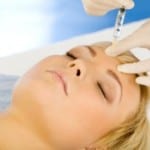 Since the advent of cosmetic injectables in the 1970s, filler products made of collagen, hyaluronic acid and a host of other substances have flooded the U.S. market in response to high consumer demand for their wrinkle smoothing, lip plumping and facial contouring effects.
Since the advent of cosmetic injectables in the 1970s, filler products made of collagen, hyaluronic acid and a host of other substances have flooded the U.S. market in response to high consumer demand for their wrinkle smoothing, lip plumping and facial contouring effects.
Today, are so many filler options available to consumers that it’s a wonder to some why pharmaceutical companies continue rolling out new injectables, especially when some existing products are already considered highly effective favorites in the aesthetic medical community and do not broker much room for competition.
But according to Dr. Gary Monheit, who commented on the topic in a recent Cosmetic Surgery Times article, unique new filler formulations and, to a lesser extent, new “me, too” products (fillers that closely resemble existing formulations) will still have a place in facial rejuvenation.
Despite the array of injectables available for wrinkle treatment, patients with fine lines around the eyes and mouth are still currently underserved, an issue which will likely be exacerbated by the fact that collagen injectables long used to treat superficial wrinkles (Zyderm, CosmoDerm) were recently discontinued by Allergan.
In addition, Dr. Monheit says patients are presently hard-pressed to find fillers that provide long-lasting results without a host of potential safety issues. Other than Sculptra and Radiesse, most fillers that can last longer than one year have generally proven problematic.
“To date, many long-lasting and permanent fillers, including both volumizing and structural products, have been associated with a number of problems. Reported complications include development of fibrotic nodules, granulomas and biofilm formation. These adverse events have not been reported with any filler materials approved by the FDA, but limited experience acquired in premarketing clinical trials may not be sufficient to fully understand product safety and biocompatibility issues,” Dr. Monheit says.
Joining the existing gamut of widely used hyaluronic acid (HA) injectable fillers, such as Restylane, Juvederm and Prevelle Silk are Juvederm Voluma (Allergan), Prevelle Lift (Genzyme/Mentor) and Belotero (Merz).
While Juvederm Voluma will primarily focus on chin and cheek augmentation and Prevelle Lift on correcting deep creases, Belotero is expected to be versatile, longer-lasting than many existing HA fillers and capable of correcting both deeper facial folds and superficial fine lines.
“In theory, this filler should be able to improve both superficial and deep lines. In patients enrolled in the clinical trial, effects lasted 6-12 months,” says Dr. Monheit, who serves as a consultant for Merz. “However, further evaluation of its benefits awaits use in clinical practice.”
As consumers eagerly await the latest and greatest fillers poised to enter the U.S. market, it is more important than ever to keep in mind that while the filler product certainly affects your facial rejuvenation results, the skill and expertise of your injector makes the biggest difference in the success (or failure) of your injectable filler experience.
Whether you’re seeking lip augmentation, wrinkle reduction or facial contouring, be sure to choose an experienced Eugene plastic surgeon with a variety of FDA approved injectable fillers available to customize your injectable filler treatment.